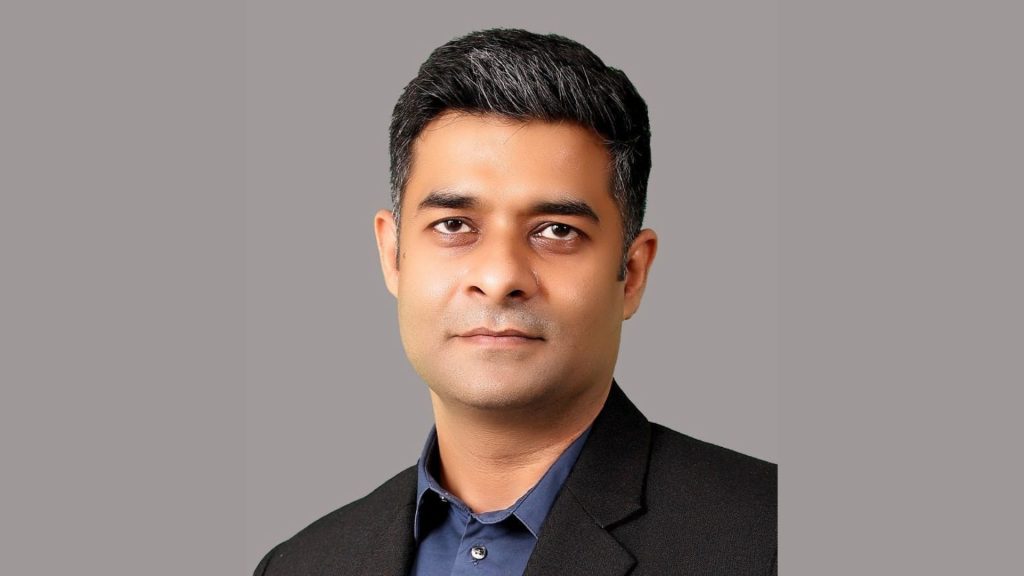This interview has been published by Anshi Mudgal and The SuperLawyer Team
Sir, you have built an impressive career spanning over 18 years across a top-tier law firm, a broadcasting company, a multinational IT consulting giant, and now as Corporate, TMT and Fintech Lead Partner at IRIS Legal. How has this diverse journey shaped your expertise, and what inspired your transition into private practice leadership?
My journey at Khaitan & Co. gave me the essential foundation every lawyer needs, the ability to spot issues, conduct thorough research, and build watertight arguments. That big law firm environment teaches you precision and attention to detail.
But the real transformation came in-house as Associate General Counsel at Capgemini and Senior Lead Counsel at Ten Sports. I discovered that being legally correct isn’t always the same as being commercially useful. You’re not just analyzing what the law says you’re figuring out how to make business objectives happen within legal boundaries. I learned to ask different questions: How can we structure this deal so it actually gets done? What’s the smartest way to navigate regulatory requirements without stalling progress? It was a shift from binary yes-or-no answers to providing a menu of options with a solution-oriented mindset.
After gaining this dual exposure, I returned to private practice with something unique to offer: not just legal expertise, but genuine understanding of how businesses actually operate. Now, as the Corporate, TMT, and Fintech Lead Partner at IRIS Legal, I bring that business-first perspective to everything I do. My clients get practical, informed advice that helps them achieve their goals. I’ll flag the risks that matter, but I won’t derail a good deal over theoretical concerns. At the end of the day, successful legal practice is about enabling business success, not preventing it.
During your early years at Khaitan & Co, you worked on cross-border and domestic M&A, private equity, and joint ventures. Which experiences from that period continue to influence how you approach corporate and technology-driven transactions today?
My Khaitan years were foundational in several ways. The cross-border work taught me to map regulatory complexity upfront rather than discover deal-breakers halfway through crucial now in tech and fintech deals. Working with PE firms helped me understand commercial dynamics and evaluate legal structures through a risk-return lens. Joint ventures taught me stakeholder management across different corporate cultures invaluable when working with multinational tech companies with different risk appetites and decision-making processes. Most importantly, that M&A training instilled rigorous due diligence and issue-spotting skills the ability to quickly distinguish between genuine deal risks and ‘nice to have’ cleanups that can wait.
You later transitioned into the media and entertainment space, handling high-stakes content acquisition and cross-border broadcasting deals. How did this experience broaden your legal skillset compared to traditional corporate and technology law?
The transition to Ten Sports was a complete game-changer. I moved from the law firm hierarchy to reporting directly to the CEO, contributing in strategy discussions with brilliant minds from IIMs, IITs, and major financial institutions where business decisions happened in real time. We were doing creative cross-border structuring to establish global presence for a popular sport, coordinating with international firms across time zones on tight deadlines in a relentless, fast-paced environment.
What made this particularly exciting was that broadcasting regulations in India were being completely redefined. Unlike traditional corporate work with periodic regulatory interaction, broadcasting required constant regulator engagement, anticipating policy changes, and building compliance into deal structures from day one. There were no established playbooks, so innovation was essential in structuring untested solutions.
This experience fundamentally changed my approach teaching me to think several moves ahead, build flexibility into structures for rapidly evolving frameworks, and integrate legal solutions with real-time business needs. Those skills have been invaluable in complex technology and fintech transactions where innovation often outpaces regulation.
In your role at Capgemini, you managed various high stake legal portfolios, led complex software licensing and cloud transformation deals, and negotiations. What were some of the most challenging aspects of these negotiations, especially in the software and cloud service space, and how did you navigate them?
As Associate General Counsel-North Americas at Capgemini, managing high-stake software licensing and cloud transformation deals required navigating multifaceted challenges under tight timelines while balancing cross-jurisdictional jurisprudence and business expectations across EMEA, APAC, and Americas—each with distinct data sovereignty and regulatory frameworks.
Some of the critical negotiation points centered around licensee’s rights on original source code, ownership of developed IP, royalty and revenue split models, managing third-party and open-source components, establishing robust escrow mechanisms with clear release conditions, post-termination IP treatment including perpetual licenses and wind-down periods, the binding nature of revenue forecasts where clients wanted flexibility while we needed commitment, and structuring appropriate liability caps and indemnification with adequate representations and warranties.
The key to timely deal closure was maintaining preparedness with legal alternate solutions to navigate negotiation impasses whether through hybrid licensing models, phased implementations, or creative commercial structuring that addressed both parties’ underlying interests.
With extensive experience in software, digital, IoT, and 5G technologies, what do you see as the most pressing legal challenges in the TMT sector today, particularly around cloud services, outsourcing, and cross-border data regulation?
From my experience, the most pressing challenge is implementing the Digital Personal Data Protection Act, 2023 while preserving India’s competitive edge as a global technology hub. Organizations are navigating the delicate balance between data localization requirements, cross-border transfer mechanisms, and serving global clients across multiple jurisdictions. This becomes particularly complex in cloud and outsourcing contexts where Indian service providers must reconcile DPDP Act obligations with clients’ home country regulations whether GDPR, CCPA, or sector-specific frameworks often requiring sophisticated contractual architectures and sometimes separate processing environments.
Secondly, there’s significant regulatory uncertainty around cloud services and emerging technologies. While DPDP Act rules are still being notified, sectoral regulators like RBI, SEBI, and IRDAI are issuing parallel guidelines, creating a complex compliance matrix. For cloud services, we’re seeing ambiguity around ‘significant data fiduciary’ classification, liability allocation between providers and customers, and critical information infrastructure obligations. In 5G and IoT, clarity remains limited on device security standards, edge computing liability, and supply chain security requirements.
The key is building flexible compliance frameworks that adapt as regulations evolve, while ensuring legal rigor doesn’t stifle India’s innovation advantage. Success requires proactive regulatory engagement and translating regulatory complexity into pragmatic operational solutions.
Having advised on M&A and strategic business transfers in technology and IP-driven sectors, what are the most critical considerations that companies and their legal counsel should keep in mind when structuring such deals?
One of the most critical considerations is comprehensive IP due diligence that goes beyond ownership verification to understand value creation architecture. This means mapping registered IP, unregistered trade secrets, open-source dependencies with potential viral licensing obligations, third-party components, and ensuring proper assignment agreements exist for contractor and employee-developed IP. I’ve seen deals nearly collapse when acquirers discovered core technology relied on restrictively-licensed open-source libraries or that critical IP was personally owned by founders rather than the company.
Equally important is analyzing transferability whether customer agreements contain change-of-control provisions and ensuring data privacy compliance for cross-border transfers post-transaction under DPDP Act and GDPR. In IP-driven businesses, talent retention often matters more than IP, as innovation resides in people structuring proper rebadging, enforceable earn-outs, retention bonuses, and non-competes while maintaining team morale is essential.
The key lesson is that technology M&A requires legal counsel to think like business strategists and technologists, structuring appropriate representations and indemnities that fairly allocate IP-related risks.
As a leader at IRIS Legal, you advise clients on both complex technology transactions and broader corporate advisory matters. Managing such a high-profile, demanding career alongside personal commitments can be challenging. How have you approached work-life balance, and what strategies have helped you manage both professional and personal priorities effectively?
Work-life balance in demanding legal practice requires intentional strategies. At IRIS Legal, we’ve found several approaches effective.
- First, creating clear time boundaries is critical. AI has made life significantly simpler by automating routine research and tasks, allowing us to work more strategically. When pressing deadlines or client emergencies arise, we put in the hours needed to deliver excellence. However, we encourage our team to leave early when there’s no immediate deadline preventing burnout and maintaining long-term productivity.
- Second, we’ve implemented a hybrid work model combining office collaboration for complex matters with focused, interruption-free time for deep work. Every day begins with a 15-minute priority discussion to align on what needs immediate attention versus what can wait—this simple practice brings remarkable clarity to otherwise chaotic days.
- Finally, we leverage technology strategically using AI extensively for research and routine tasks to free mental bandwidth for high-value, strategic work that truly requires our expertise. We also follow a 15-minute rule, prioritizing tasks that can be completed quickly to prevent small matters from accumulating into overwhelming backlogs.
These strategies help us maintain high client service standards while preserving personal time and team well-being.
Finally, what advice would you give to young lawyers aspiring to build careers in technology, especially those contemplating whether to start in a law firm or an in-house role?
My advice is simple: in TMT, technology literacy is as critical as legal expertise. You need solid legal fundamentals, business acumen, and genuine tech fluency not surface knowledge, but actual understanding of how tech such as AI models work, how cloud architectures function, how platforms handle data. I’ve seen talented lawyers struggle because they couldn’t grasp what their clients were building.
I’d recommend starting at a specialized firm for 2-3 years to get breadth, exposure to how different companies handle tech governance, cross-border data flows, emerging tech compliance, then moving in-house to understand how legal advice translates into product reality.
Staying current is non-negotiable. I follow AI researchers, read tech blogs as much as legal updates, and track policy developments constantly. When new regulations drop which happens monthly you need to understand both the regulatory requirements and technical implementation.
The lawyers succeeding in TMT can walk into meetings with engineers and speak their language, then explain regulatory implications to the C-suite. The traditional ‘learn law first, industry knowledge later’ approach doesn’t work in TMT the field moves too fast, and the opportunities are extraordinary for lawyers who master this hybrid skillset.
Get in touch with Roopam Verma –




